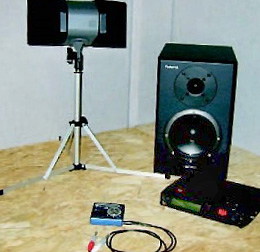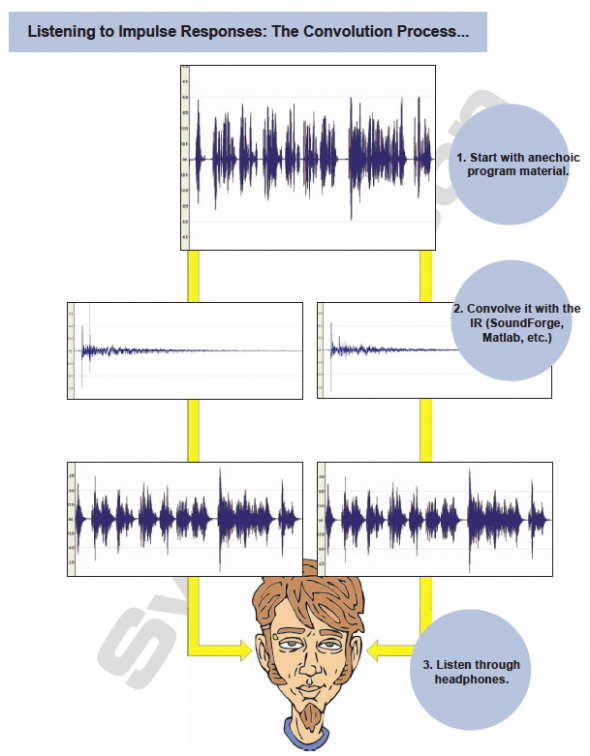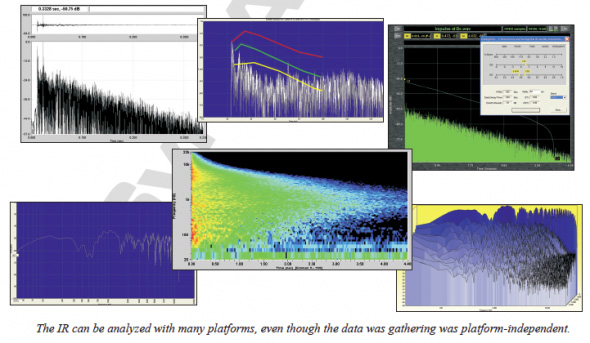
The speech track is used to provide a reference for what the measurement position sounded like. It can later be used as a reference to compare the auralized files to.
The whole process takes about two minutes per listener location.
Post-Processing
SoundForge provides a nifty utility to recover the IR from the recordings.
First you must transfer the recordings to your PC.
Next, open the recording in a wave editor and create a new track from the 48 second sweep portion of the recording.
The user then simply specifies the source file and recorded file and selects “Recover Impulse” to recover the IR.
The process takes a few seconds, and a new file is created that contains the IR.
You can hit “play” and listen to the impulse.

The Possibilities
Now the fun begins! The IR can be opened on Smaart Acoustic Tools, WinMLS, or TEF-MLS (all can open wave files) and processed to yield the various acoustic metrics.
It can be auralized with dry program material in SoundForge, Cool Edit, or the EARS module of EASE.
The user is free to exploit the strengths of all of these platforms (plus their ear- brain system) to analyze the data. It also allows for easy comparison of the measurement platform algorithms.
You will quickly develop some favorites that are more meaningful to the way that you think about sound, and that help you draw meaningful conclusions from the data. Such files can be exchanged with colleagues for consultation, and can serve to document the before-and- after performance of a sound system renovation.
They are also excellent for archival purposes. How would you like to have an IR of the Fogg Lecture Hall where Sabine derived his famous equation? We could enter that space and listen to it, as well as many others.

IR testing is nothing new. We just have a few new tools that help us make better use of the data.
All serve to make us better measurers and better listeners, ultimately resulting in better sounding systems.
